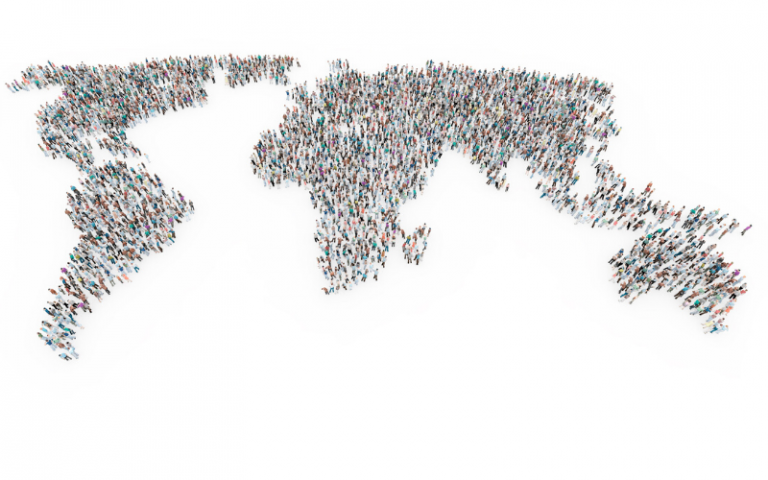The People Reference Boureau (PRB) estimated that 108 billion people had lived on Earth by 2011. So the people currently living would be "only" 6.8% of all humanity. What other curiosities are there about the world population? Let's find out together.

The People Reference Boureau (PRB) estimated that 108 billion people had lived on Earth by 2011. So the people currently living would be “only” 6.8% of all humanity. What other curiosities are there about the world population? Let’s find out together.
How Much Was (and Will Be) the World Population?
Actually, we have come a long way. In the year 1000, in fact, the world population was only 400 million people. 750 years later, the population had doubled (800 million). And by 1804 it had reached one billion.
It then doubled to 2 billion in 1927, so 123 years later. And in 1960 we reached 3 billion. But it only took 40 years for the population (in 2000) to double again, reaching 6 billion. On 31 October 2011 we exceeded 7 billion.
The world population may reach 10 billion people in 2050, the year in which, according to calculations, 70% of people will live in cities. But after having multiplied by seven over the last two centuries, the number of inhabitants of the planet will stabilize due to lower fertility. And we won’t reach 11 billion before the end of the 21st century.
The demographic explosion would result first of all from an increase in birth rates. UNICEF estimates that an average of 353,000 children are born every day around the world. This means 18.9 births per 1,000 inhabitants, 255 global births per minute or 4.3 births every second.
Another element that will help population to grow in the future is a fall in the mortality rate. This would be due to improvements in medicine, nutrition, technology, education, and fewer war deaths.
The Conditions of People in the World Today
As we know, living conditions today differ from country to country. For example, countries in sub-Saharan Africa have the lowest average life expectancy (51.5 years). Instead, Western Europeans (80.3 years) and North Americans (79.3 years) have the highest. According to Water.org, 663 million people have no access to water. Moreover, 2.4 billion people do not have access to a toilet. And there are more people in the world with a mobile phone than a toilet.
The gap between rich and poor also continues to change. According to Oxfam data, in 2015, just 62 people had the same wealth as 3.6 billion people – half the poorest half of the world‘s population. In 2010 there were 388. As a result, the wealth of the 62 richest people has increased by 44% since 2010, an increase of over $500 billion. Over the same period, the wealth of the poorest half of the world‘s population decreased by just over $1 trillion (41%).
The world, however, is getting younger. About 52% of the world‘s population is under 30 years old. And 1.8 billion people worldwide are between 10 and 24. The Beijing Academy of Sciences in 2011 drew a portrait of the average human being: Chinese, right-handed and 28 years old. A description that matches 9 million people.




